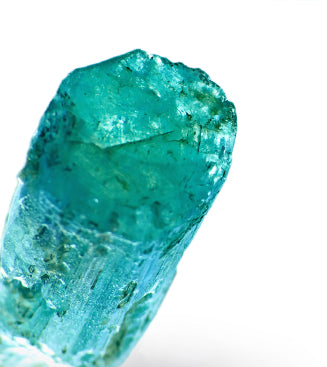Aquamarines: The Splendor of March
Gaze at an aquamarine and you can’t help but marvel at the tranquil beauty of the blue green stone. The color, resembling the most tropical of oceans or a morning sky on a bright spring day, is among the most popular and versatile of all the gemstones and is the birthstone of lucky babies born in March.

The tantalizing hue has been in demand throughout the centuries and was used to create stunning jewelry as far back as Greek and Roman times. The ancients believed that if sailors adorned themselves with this beryl-derived stone, they would be safe on their sea voyage and their ship would return home unscathed. Fast forward a few centuries to the Middle Ages where the nearly transparent blue color of the aquamarine was thought to invoke premonitions if you stared into it long enough, thus the stone was in high demand to create the famous crystal ball of fortune telling fame.
The largest aquamarine ever mined was found in the Minas Gerais mines in Brazil in 1980. It weighed in at a massive 100 pounds, was more than three feet long, and it was dubbed the Dom Pedro Aquamarine after the Brazilian emperor at the time. Unfortunately, the stone was dropped and broke into three pieces. The smaller two were turned into jewelry, but the largest was cut by German gem artist Bernd Munsteiner into a stunning 14 inch tall obelisk that is now on display next to the Hope Diamond in the Smithsonian Museum in Washington D.C.
Delicate and serene, aquamarines have enchanted throughout the centuries and continue to dazzle against any skin tone. The sea hue has a way of accenting any ensemble, and is the perfect way to embellish your spring wardrobe–even if you can’t claim the aquamarine as your birthstone. Many beaded jewelry designers will often use aqua Swarovski Austrian crystals which is often far less expensive than natural aquamarine gemstones.
Sources:
Photo Credit
- Aquamarine gemstone - iStock Photo
- Aquamarine rock gemstone - 123RF

